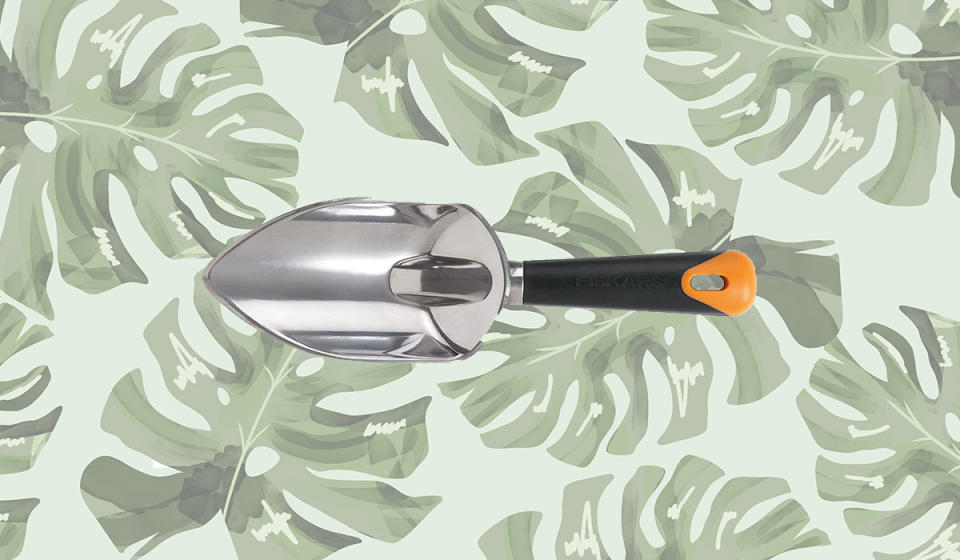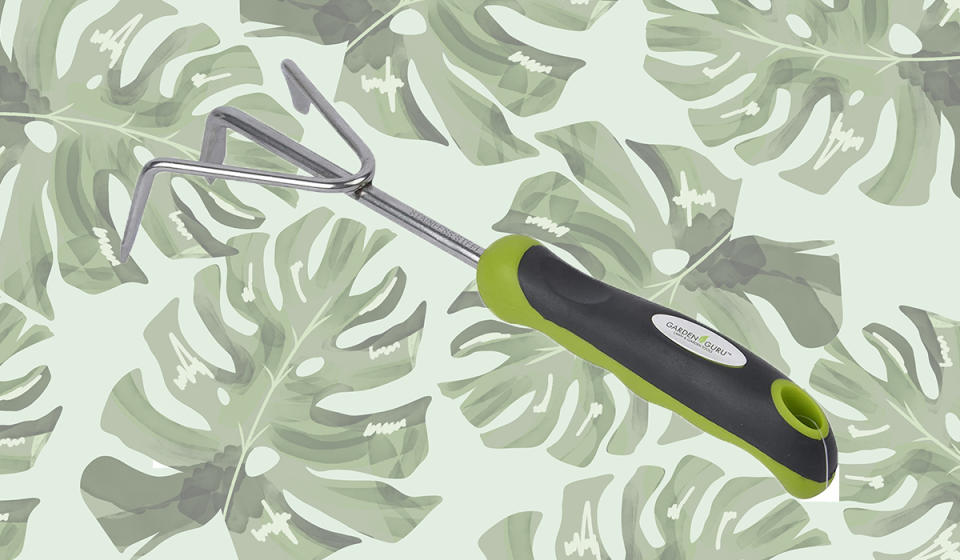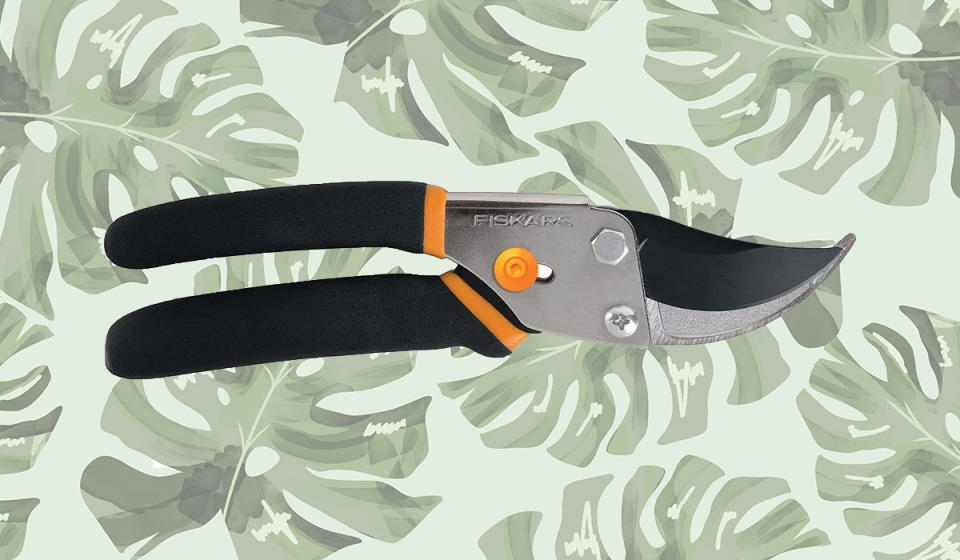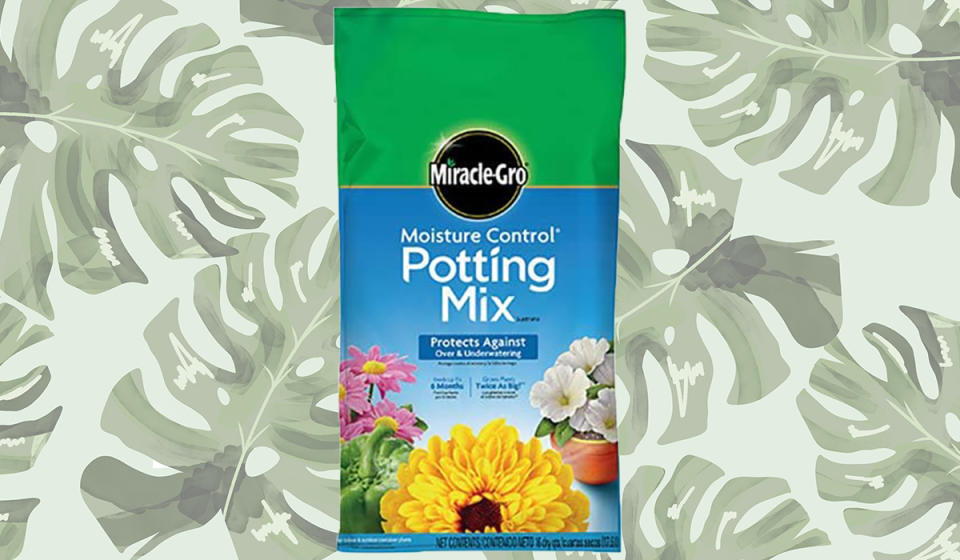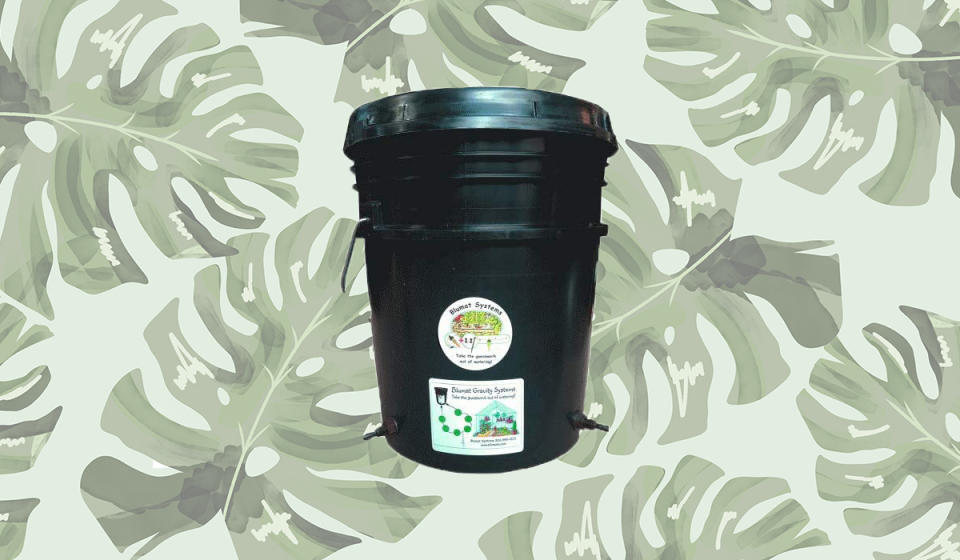People are really digging this ‘corona-gardening’ craze—here's how to get growing
Yahoo Life is committed to finding you the best products at the best prices. We may receive a share from purchases made via links on this page. Pricing and availability are subject to change.

Gardening has never been hotter. Many people have turned to gardening in the age of COVID-19 as a form of entertainment, self-sufficiency, and even therapy.
“Just being out in the warm sun lifts spirits,” Rebecca Finneran, senior horticulture educator at Michigan State University Extension, tells Yahoo Life. “Gardening is relaxing, and it offers weight-bearing exercise and downtime away from a computer screen.”
Consider the logistics
Of course, if you’re new to this, starting your own garden can be overwhelming. “Consider the size of your family, and how big a garden you think you want to make,” Bob Westerfield, a consumer horticulturist at the University of Georgia, tells Yahoo Life. If you only have a small area to work with or you don’t want to go through the hassle up ripping up your grass, Westerfield recommends raised beds. (No yard? Use a raised bed to grow plants on a deck, porch, or rooftop, says Finneran.)
Find a sunny spot
Your sunlight exposure matters, too, horticulturist Jon Traunfeld, director of the Home & Garden Information Center at University of Maryland Extension, tells Yahoo Life. “Most plants need six to eight hours of direct sunlight to grow well,” he says. “This includes most annual flowers like zinnia and marigold, tomato, pepper, and basil.” If you have a specific plant in mind, Traunfeld recommends researching it in advance so you know its particular growing needs.
Herbs, veggies, and annuals
“Plant things you’re familiar with—not exotic stuff,” Finneran says. If you want to see results from fruits and veggies this season, Westerfield says it’s best to buy transplants (seedlings). “You don’t want to grow those from seeds,” he says.
Traunfeld recommends herbs like basil, thyme, rosemary, and oregano, veggies like tomatoes, peppers, bush cucumbers, and leafy greens, and annual flowers like mountain mint, bee balm, black-eyed Susan, and aster.
Ready to get growing? Check out these expert-approved tools.
Arlime Planting Box
This raised bed is just right: It’s deep enough to give plants space to lay down roots. And, while many raised beds are low to the ground, this one is 30 inches tall, making it a good fit for people who don’t like to lean over when they garden.
Fiskars Big Grip Trowel
A hand trowel can help you do everything from scoop up dirt and add to your raised bed to dig out a patch to plant. It’s a tool you’ll use often, says Westerfield. What kind to buy? Finneran says that “ergonomics are important.” This Fiskars hand trowel has a Softgrip handle for comfort. It also has a pointed head to cut through tough turf, and a hole for hanging.
Husky 35-Gallon Tote
One of the quickest ways to install a raised bed is to get an oversize plastic container and fill it with dirt, says Westerfield. Plastic containers tend to work well for decks and rooftop gardens because they’re easy to set up and easy to remove when you’re done. This Husky 35-gallon tote is sturdy, so you don’t have to worry about it cracking as your garden grows. Just drill holes in the bottom before you get started. “You have to have drainage holes,” says Westerfield. “Otherwise, you’ll get root rot.”
Garden Guru Hand Cultivator
A rake can level out your soil or remove leaves from your gardening site, Finneran says. This Garden Guru hand rake is great for turning and loosening soil before you plant, and weeding once your plants are in. It has stainless steel prongs to work through soil and an ergonomic handle.
Fiskars Steel Bypass Pruning Shears
Bypass blades, which are designed to catch and hold a branch or stem when you cut it, are “necessary” for woody-type plants, says Finneran. These Fiskars bypass pruning shears have a steel blade that stays sharp. A low-friction coating keeps blades from getting gummed up with sap and debris, and helps prevent rust. Padded, non-slip grips keep hands comfy while you work.
Miracle-Gro Moisture-Control Potting Mix
If you don’t have soil handy or you’re creating a raised bed, Traunfeld recommends potting soil. It’s lightweight, drains well, holds water and nutrients, and is typically free of weeds, insects, and diseases. Miracle Gro’s potting mix has moisture control to help protect your plants from over- and under-watering. The special formula will also help feed your plants for up to six months.
Bloem 2.5 Gallon Watering Can
Your plants will need plenty of water and, if you don’t have a hose handy, a watering can is the way to go. Finneran recommends a can with a gentle spray head (to avoid pummeling your plants with water) and a head that can be easily removed for when you want a faster pour. This one has both, and holds 2.5 gallons of water to minimize trips to the sink. It’s made of high impact-resistant plastic so it’ll survive a drop here and there.
5-Gallon Bucket
Gardening requires gear, and toting it around with just two hands can be tricky. That’s why Traunfeld recommends a 5-gallon bucket. It’s “good for holding tools, carrying water, and mixing up potting soil,” he says. This bucket is made of durable food-grade plastic and has a metal handle for easy carrying.
Read More from Yahoo Lifestyle:
Follow us on Instagram, Facebook, Twitter, and Pinterest for nonstop inspiration delivered fresh to your feed, every day
Want daily pop culture news delivered to your inbox? Sign up here for Yahoo Entertainment & Lifestyle's newsletter.

